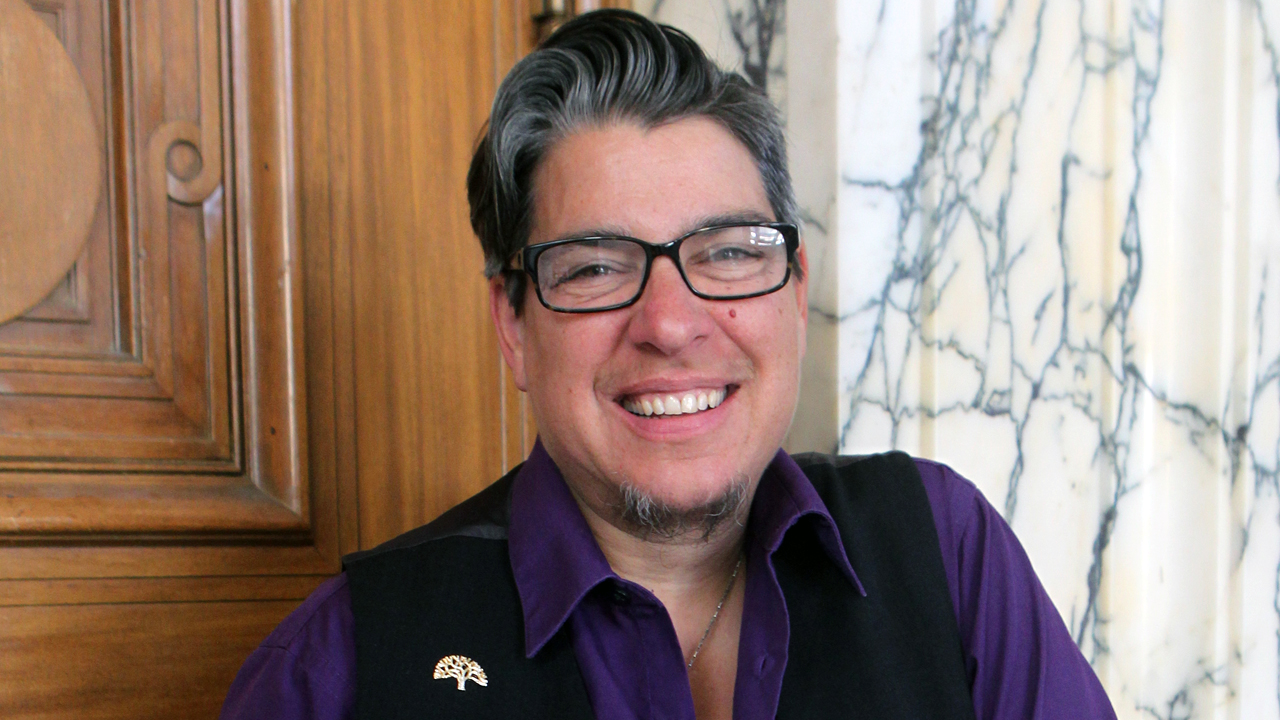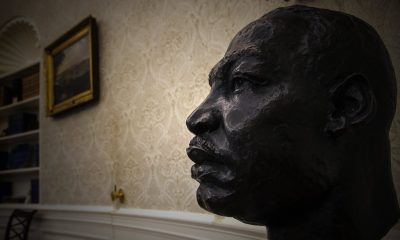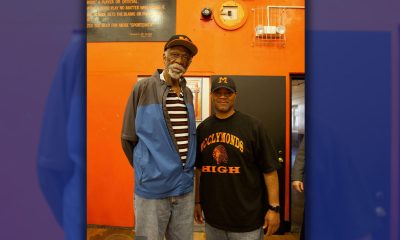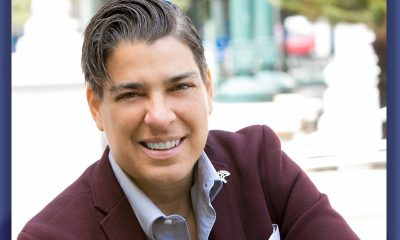Bay Area
Kaplan Proposes Law to Protect Police Commissioners From Official ‘Intimidation and Harassment’

Reacting to reports that the City Administration secretly spent $50,000 to hire an outside contractor to investigate a member of the Oakland Police Commission, City President Rebecca Kaplan is proposing an ordinance that reaffirms that the City Charter gives investigative author-ity solely to the Police Commission and the City Council.
The proposed ordinance “reiterates the importance of an independent police commission and that neither the City Administrator nor the Chief of Police are authorized to engage in any action against commissioners, nor are they authorized to assume the powers granted to the Council, the Ethics Commission or the Police Commission.”
This conflict between the authority of the council and the administraor authority has been brewing for a while, focusing on repeated moves by the Chief of Police Anne Kirkpatrick and the City Administrator Sabrina Landreth against Oakland Police Commission Vice Chair Ginale Harris.
“Several meetings ago, I requested a copy of the contract between the City Administration and the outside project investigator who apparently was hired to investigate a police commissioner without notice to council, without a vote of council,” said Kaplan, speaking at Tuesday’s Public Safety Committee meeting.
This administrative action “was felt by police commission members as intimidating and harassment of them,” said Kaplan.
She never received the copy of the contract from the City Administrator but was eventually given a copy this week by a blogger, known as Hyphenated-Republic (hyphenatedrepublic.com), who had obtained it through a Public Records Act request to the city.
The contract confirms that the administrator in November 2018 hired a company to investigate “a specifically named member of the police commission,” Kaplan said.
“I believe that what was done was illegal,” she said.
“The charter of the City of Oakland states that it is the City Council that has the power to remove a commissioner for misconduct,” said Kaplan. “I don’t see any authority anywhere for the city administrator to independently decide to undertake an investigation.”
In a memo accompanying the proposed ordinance, Kaplan noted that Measure LL, which estab-lished the police commission, specifically quoted the National Association for Civilian Oversight of Law Enforcement about the key importance of creating a commission with “independence from the executive branch of government.”
According to the City Charter, as quoted in the memo, “The City Council may remove members of the commission for cause as provided in Section 601 of the charter, or members of the commission may be removed by a majority vote of the commission, only for conviction of a felony, conviction of a misdemeanor involving moral turpitude, a material act of dishonesty, fraud, or other act of moral turpitude, substantial neglect of duty (and) gross misconduct in office.”
A more recent incident involving an attempt to remove Harris took place in November 2019 when OPD Chief Anne Kirkpatrick complained about Harris to Police Commission Chair Regina Jackson by phone and email. In the email dated Nov. 19, Kirkpatrick mentioned an “anony-mous” call to internal Affairs concerning a verbal dispute between Harris and an administrator at her child’s school in San Francisco.
“While Harris’ style is more ‘sharp’ than some, her observations have often been proven to be accurate This sort of treatment feels like bullying,” said Jackson in an email to the Oakland Post.
“The Police Commission was voter approved by 83 percent of the citizens of Oakland,” Jackson continued. “We are volunteers seeking to understand and improve structures and policies in order to support OPD in being more emotionally intelligent and transparent in their accountability to communities they serve. We take our jobs seriously and have been resisted since we started.”
This latest incident, which led to coverage by the Bay Area media, predated the City Administrator’s hiring of the investigator by one year and involved different allegations.
The city administration also has filed two or three Public Ethics Commission complaints against Harris, and she was exonerated in all these cases, according to Commissioner Henry Gage.
“The question of who investigates the commission is an important one,” Gage said. “We don’t want someone who is too close to the police department to turn around and investigate the commission.”
“The administration should be on the side of increased police oversight,” he said.
The criticisms of Harris “seem very trivial,” said civil rights attorney Dan Siegel, who is repre-senting Harris.
“The city administration does not have the authority under the charter to be investigating members of the police commission,” said Siegel. “It does not seem like the City Administrator is justified in dealing with this like she is an employee.”
Representatives of the City Attorney and the City Administrator who attended the committee meeting said they didn’t have the information to be able to comment on the issue.
This conflict over the police commission reflects a broader problem: the city administration ignores, subverts or buries City Council decisions that the administration does not like, according to Rashidah Grinage of the Coalition for Police Accountability.
“Basically, Oakland is replicating Washington, D.C.,” said Grinage. “We have an administration that basically thumbs its nose at the City Council and decides what decisions it wants to implement.”
“Once something passes the City Council, it goes into a black hole. It is really quite astonishing,” she said.
The decision on Kaplan’s proposed ordinance was postponed to the Tuesday, Feb. 11 Public Safety Committee meeting, to give the City Attorney a chance to look at the proposal.
Kaplan Proposes Law to Protect Police Commissioners
From Official ‘Intimidation and Harassment’
Activism
Oakland Post: Week of May 21 – 27, 2025
The printed Weekly Edition of the Oakland Post: Week of May 21 – 27, 2025

To enlarge your view of this issue, use the slider, magnifying glass icon or full page icon in the lower right corner of the browser window.
Bay Area
Chevron Richmond Installs Baker Hughes Flare.IQ, Real-time Flare Monitoring, Control and Reduction System
While the sight of flaring can cause concern in the community, flares are essential safety systems that burn pollutants to prevent them from being released directly into the atmosphere. They activate during startup and shut-down of facility units or during upsets or equipment malfunctions. The typical flare stack is about 200 feet high so that vapors are well above street levels.

The Richmond Standard
Chevron Richmond recently installed flare.IQ, a real-time, automated system that will improve the facility’s flaring performance.
The technology, developed by Panametrics, a Baker Hughes business, uses sensors to monitor, reduce and control flaring in real time. It collects and assesses data on refinery processes, such as temperature, pressure, gas flow and gas composition, and adjusts accordingly to ensure flares burn more efficiently and cleanly, leading to fewer emissions.
“The cleaner the flare, the brighter the flame can look,” said Duy Nguyen, a Chevron Richmond flaring specialist. “If you see a brighter flame than usual on a flare, that actually means flare.IQ is operating as intended.”
While the sight of flaring can cause concern in the community, flares are essential safety systems that burn pollutants to prevent them from being released directly into the atmosphere. They activate during startup and shut-down of facility units or during upsets or equipment malfunctions. The typical flare stack is about 200 feet high so that vapors are well above street levels.
“A key element in Baker Hughes’ emissions abatement portfolio, flare.IQ has a proven track record in optimizing flare operations and significantly reducing emissions,” said Colin Hehir, vice president of Panametrics, a Baker Hughes business. “By partnering with Chevron Richmond, one of the first operators in North America to adopt flare.IQ, we are looking forward to enhancing the plant’s flaring operations.”
The installation of flare.IQ is part of a broader and ongoing effort by Chevron Richmond to improve flare performance, particularly in response to increased events after the new, more efficient hydrogen plant was brought online in 2019.
Since then, the company has invested $25 million — and counting — into flare minimization. As part of the effort, a multidisciplinary refinery team was formed to find and implement ways to improve operational reliability and ultimately reduce flaring. Operators and other employees involved in management of flares and flare gas recovery systems undergo new training.
“It is important to me that the community knows we are working hard to lower emissions and improve our flaring performance,” Nguyen said.
Also evolving is the process by which community members are notified of flaring incidents. The Community Warning System (CWS), operated by Contra Costa County is an “all-hazard” public warning system.
Residents can opt-in to receive alerts via text, e-mail and landline. The CWS was recently expanded to enable residents to receive notifications for “Level 1” incidents, which are considered informational as they do not require any community action.
For more information related to these topics, check out the resources included on the Chevron Richmond, CAER and Contra Costa Health websites. Residents are also encouraged to follow @chevronrichmond and @RFDCAOnline on Facebook and X (formerly Twitter), where additional information may be posted during an incident.
Activism
Oakland Hosts Town Hall Addressing Lead Hazards in City Housing
According to the city, there are 22,000 households in need of services for lead issues, most in predominantly low-income or Black and Latino neighborhoods, but only 550 to 600 homes are addressed every year. The city is hoping to use part of the multimillion-dollar settlement to increase the number of households served each year.

By Magaly Muñoz
The City of Oakland’s Housing and Community Development Department hosted a town hall in the Fruitvale to discuss the efforts being undertaken to remove lead primarily found in housing in East and West Oakland.
In 2021, the city was awarded $14 million out of a $24 million legal settlement from a lawsuit against paint distributors for selling lead-based paint that has affected hundreds of families in Oakland and Alameda County. The funding is intended to be used for lead poisoning reduction and prevention services in paint only, not water or other sources as has been found recently in schools across the city.
The settlement can be used for developing or enhancing programs that abate lead-based paint, providing services to individuals, particularly exposed children, educating the public about hazards caused by lead paint, and covering attorney’s fees incurred in pursuing litigation.
According to the city, there are 22,000 households in need of services for lead issues, most in predominantly low-income or Black and Latino neighborhoods, but only 550 to 600 homes are addressed every year. The city is hoping to use part of the multimillion-dollar settlement to increase the number of households served each year.
Most of the homes affected were built prior to 1978, and 12,000 of these homes are considered to be at high risk for lead poisoning.
City councilmember Noel Gallo, who represents a few of the lead-affected Census tracts, said the majority of the poisoned kids and families are coming directly from neighborhoods like the Fruitvale.
“When you look at the [kids being admitted] at the children’s hospital, they’re coming from this community,” Gallo said at the town hall.
In order to eventually rid the highest impacted homes of lead poisoning, the city intends to create programs and activities such as lead-based paint inspections and assessments, full abatement designed to permanently eliminate lead-based paint, or partial abatement for repairs, painting, and specialized cleaning meant for temporary reduction of hazards.
In feedback for what the city could implement in their programming, residents in attendance of the event said they want more accessibility to resources, like blood testing, and information from officials about lead poisoning symptoms, hotlines for assistance, and updates on the reduction of lead in their communities.
Attendees also asked how they’d know where they are on the prioritization list and what would be done to address lead in the water found at several school sites in Oakland last year.
City staff said there will be a follow-up event to gather more community input for programming in August, with finalizations happening in the fall and a pilot launch in early 2026.
-

 #NNPA BlackPress3 weeks ago
#NNPA BlackPress3 weeks agoMLK Bust Quietly Removed from Oval Office Under Trump
-

 Activism4 weeks ago
Activism4 weeks agoOakland Post: Week of April 30 – May 6, 2025
-

 Activism3 weeks ago
Activism3 weeks agoOakland Post: Week of May 7 – 13, 2025
-

 #NNPA BlackPress3 weeks ago
#NNPA BlackPress3 weeks agoTrump Abruptly Fires First Carla Hayden: The First Black Woman to Serve as Librarian of Congress
-

 Activism2 weeks ago
Activism2 weeks agoNew Oakland Moving Forward
-

 Activism2 weeks ago
Activism2 weeks agoAfter Two Decades, Oakland Unified Will Finally Regain Local Control
-

 Activism2 weeks ago
Activism2 weeks agoOakland Post: Week of May 14 – 20, 2025
-

 Alameda County2 weeks ago
Alameda County2 weeks agoOakland Begins Month-Long Closure on Largest Homeless Encampment





















































